Nidhal Bouaynaya
DICOM De-Identification via Hybrid AI and Rule-Based Framework for Scalable, Uncertainty-Aware Redaction
Jul 31, 2025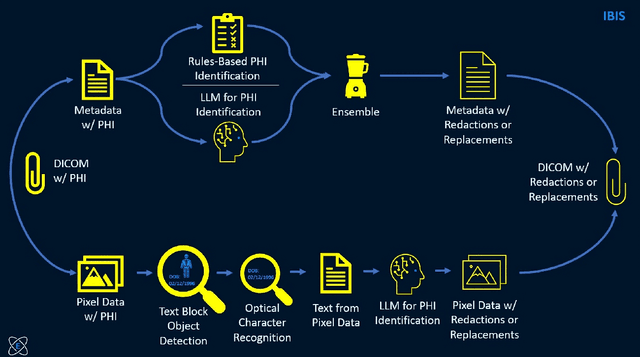


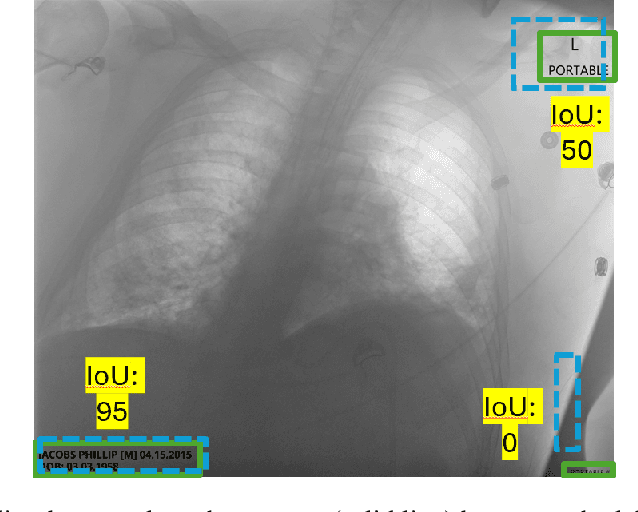
Abstract:Access to medical imaging and associated text data has the potential to drive major advances in healthcare research and patient outcomes. However, the presence of Protected Health Information (PHI) and Personally Identifiable Information (PII) in Digital Imaging and Communications in Medicine (DICOM) files presents a significant barrier to the ethical and secure sharing of imaging datasets. This paper presents a hybrid de-identification framework developed by Impact Business Information Solutions (IBIS) that combines rule-based and AI-driven techniques, and rigorous uncertainty quantification for comprehensive PHI/PII removal from both metadata and pixel data. Our approach begins with a two-tiered rule-based system targeting explicit and inferred metadata elements, further augmented by a large language model (LLM) fine-tuned for Named Entity Recognition (NER), and trained on a suite of synthetic datasets simulating realistic clinical PHI/PII. For pixel data, we employ an uncertainty-aware Faster R-CNN model to localize embedded text, extract candidate PHI via Optical Character Recognition (OCR), and apply the NER pipeline for final redaction. Crucially, uncertainty quantification provides confidence measures for AI-based detections to enhance automation reliability and enable informed human-in-the-loop verification to manage residual risks. This uncertainty-aware deidentification framework achieves robust performance across benchmark datasets and regulatory standards, including DICOM, HIPAA, and TCIA compliance metrics. By combining scalable automation, uncertainty quantification, and rigorous quality assurance, our solution addresses critical challenges in medical data de-identification and supports the secure, ethical, and trustworthy release of imaging data for research.
Medical Image De-Identification Benchmark Challenge
Jul 31, 2025Abstract:The de-identification (deID) of protected health information (PHI) and personally identifiable information (PII) is a fundamental requirement for sharing medical images, particularly through public repositories, to ensure compliance with patient privacy laws. In addition, preservation of non-PHI metadata to inform and enable downstream development of imaging artificial intelligence (AI) is an important consideration in biomedical research. The goal of MIDI-B was to provide a standardized platform for benchmarking of DICOM image deID tools based on a set of rules conformant to the HIPAA Safe Harbor regulation, the DICOM Attribute Confidentiality Profiles, and best practices in preservation of research-critical metadata, as defined by The Cancer Imaging Archive (TCIA). The challenge employed a large, diverse, multi-center, and multi-modality set of real de-identified radiology images with synthetic PHI/PII inserted. The MIDI-B Challenge consisted of three phases: training, validation, and test. Eighty individuals registered for the challenge. In the training phase, we encouraged participants to tune their algorithms using their in-house or public data. The validation and test phases utilized the DICOM images containing synthetic identifiers (of 216 and 322 subjects, respectively). Ten teams successfully completed the test phase of the challenge. To measure success of a rule-based approach to image deID, scores were computed as the percentage of correct actions from the total number of required actions. The scores ranged from 97.91% to 99.93%. Participants employed a variety of open-source and proprietary tools with customized configurations, large language models, and optical character recognition (OCR). In this paper we provide a comprehensive report on the MIDI-B Challenge's design, implementation, results, and lessons learned.
Dynamic Continual Learning: Harnessing Parameter Uncertainty for Improved Network Adaptation
Jan 18, 2025Abstract:When fine-tuning Deep Neural Networks (DNNs) to new data, DNNs are prone to overwriting network parameters required for task-specific functionality on previously learned tasks, resulting in a loss of performance on those tasks. We propose using parameter-based uncertainty to determine which parameters are relevant to a network's learned function and regularize training to prevent change in these important parameters. We approach this regularization in two ways: (1), we constrain critical parameters from significant changes by associating more critical parameters with lower learning rates, thereby limiting alterations in those parameters; (2), important parameters are restricted from change by imposing a higher regularization weighting, causing parameters to revert to their states prior to the learning of subsequent tasks. We leverage a Bayesian Moment Propagation framework which learns network parameters concurrently with their associated uncertainties while allowing each parameter to contribute uncertainty to the network's predictive distribution, avoiding the pitfalls of existing sampling-based methods. The proposed approach is evaluated for common sequential benchmark datasets and compared to existing published approaches from the Continual Learning community. Ultimately, we show improved Continual Learning performance for Average Test Accuracy and Backward Transfer metrics compared to sampling-based methods and other non-uncertainty-based approaches.
* 8 pages, 2 figures
Out-of-distribution Object Detection through Bayesian Uncertainty Estimation
Oct 29, 2023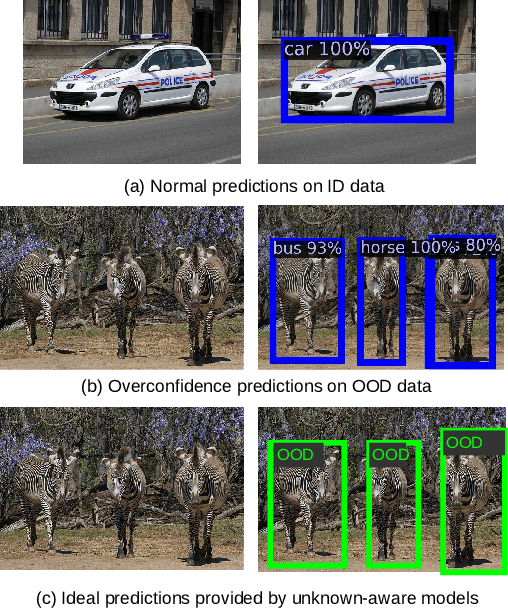

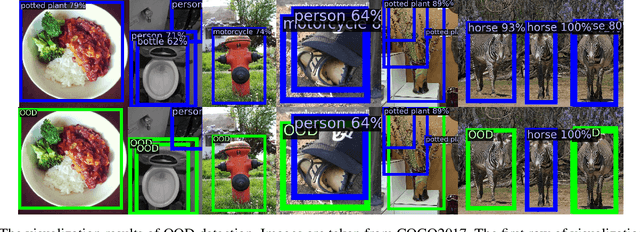

Abstract:The superior performance of object detectors is often established under the condition that the test samples are in the same distribution as the training data. However, in many practical applications, out-of-distribution (OOD) instances are inevitable and usually lead to uncertainty in the results. In this paper, we propose a novel, intuitive, and scalable probabilistic object detection method for OOD detection. Unlike other uncertainty-modeling methods that either require huge computational costs to infer the weight distributions or rely on model training through synthetic outlier data, our method is able to distinguish between in-distribution (ID) data and OOD data via weight parameter sampling from proposed Gaussian distributions based on pre-trained networks. We demonstrate that our Bayesian object detector can achieve satisfactory OOD identification performance by reducing the FPR95 score by up to 8.19% and increasing the AUROC score by up to 13.94% when trained on BDD100k and VOC datasets as the ID datasets and evaluated on COCO2017 dataset as the OOD dataset.
Variational Density Propagation Continual Learning
Aug 22, 2023
Abstract:Deep Neural Networks (DNNs) deployed to the real world are regularly subject to out-of-distribution (OoD) data, various types of noise, and shifting conceptual objectives. This paper proposes a framework for adapting to data distribution drift modeled by benchmark Continual Learning datasets. We develop and evaluate a method of Continual Learning that leverages uncertainty quantification from Bayesian Inference to mitigate catastrophic forgetting. We expand on previous approaches by removing the need for Monte Carlo sampling of the model weights to sample the predictive distribution. We optimize a closed-form Evidence Lower Bound (ELBO) objective approximating the predictive distribution by propagating the first two moments of a distribution, i.e. mean and covariance, through all network layers. Catastrophic forgetting is mitigated by using the closed-form ELBO to approximate the Minimum Description Length (MDL) Principle, inherently penalizing changes in the model likelihood by minimizing the KL Divergence between the variational posterior for the current task and the previous task's variational posterior acting as the prior. Leveraging the approximation of the MDL principle, we aim to initially learn a sparse variational posterior and then minimize additional model complexity learned for subsequent tasks. Our approach is evaluated for the task incremental learning scenario using density propagated versions of fully-connected and convolutional neural networks across multiple sequential benchmark datasets with varying task sequence lengths. Ultimately, this procedure produces a minimally complex network over a series of tasks mitigating catastrophic forgetting.
EvalAttAI: A Holistic Approach to Evaluating Attribution Maps in Robust and Non-Robust Models
Mar 15, 2023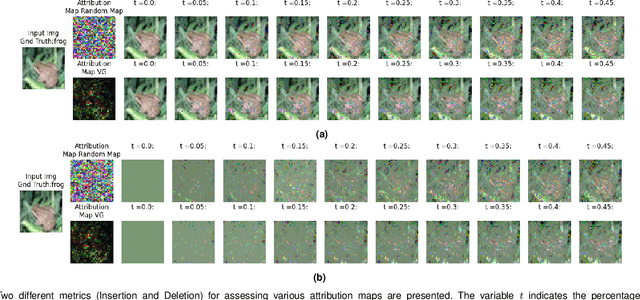
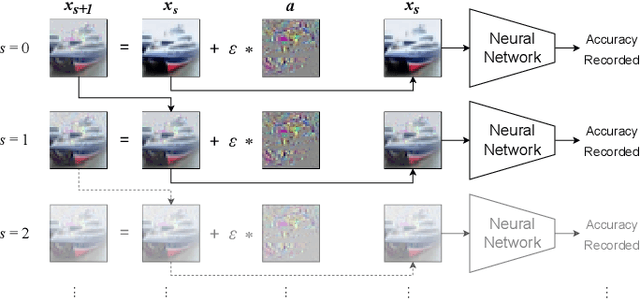
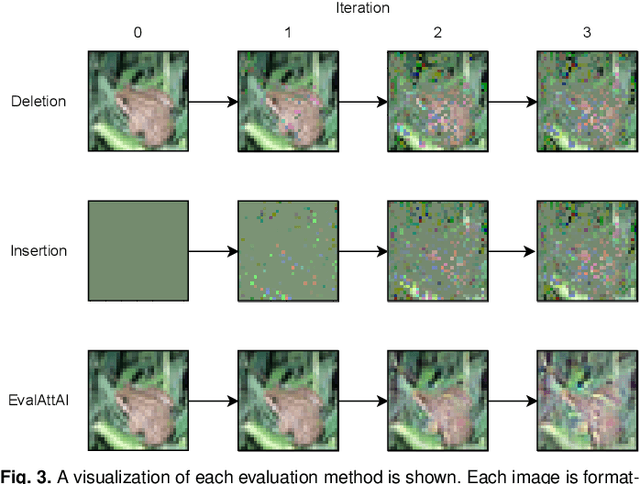
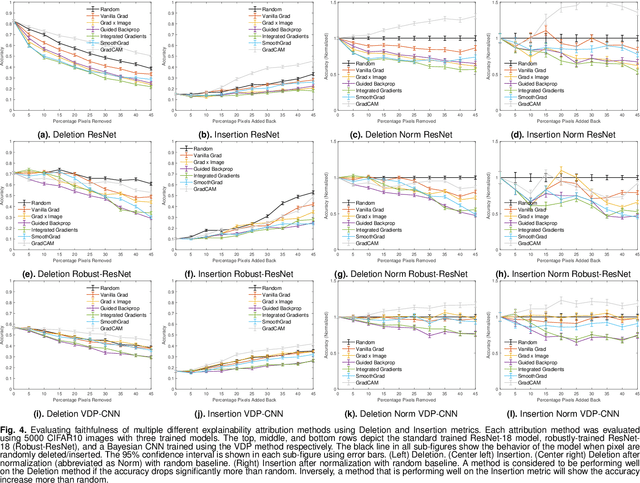
Abstract:The expansion of explainable artificial intelligence as a field of research has generated numerous methods of visualizing and understanding the black box of a machine learning model. Attribution maps are generally used to highlight the parts of the input image that influence the model to make a specific decision. On the other hand, the robustness of machine learning models to natural noise and adversarial attacks is also being actively explored. This paper focuses on evaluating methods of attribution mapping to find whether robust neural networks are more explainable. We explore this problem within the application of classification for medical imaging. Explainability research is at an impasse. There are many methods of attribution mapping, but no current consensus on how to evaluate them and determine the ones that are the best. Our experiments on multiple datasets (natural and medical imaging) and various attribution methods reveal that two popular evaluation metrics, Deletion and Insertion, have inherent limitations and yield contradictory results. We propose a new explainability faithfulness metric (called EvalAttAI) that addresses the limitations of prior metrics. Using our novel evaluation, we found that Bayesian deep neural networks using the Variational Density Propagation technique were consistently more explainable when used with the best performing attribution method, the Vanilla Gradient. However, in general, various types of robust neural networks may not be more explainable, despite these models producing more visually plausible attribution maps.
Robust Explainability: A Tutorial on Gradient-Based Attribution Methods for Deep Neural Networks
Jul 28, 2021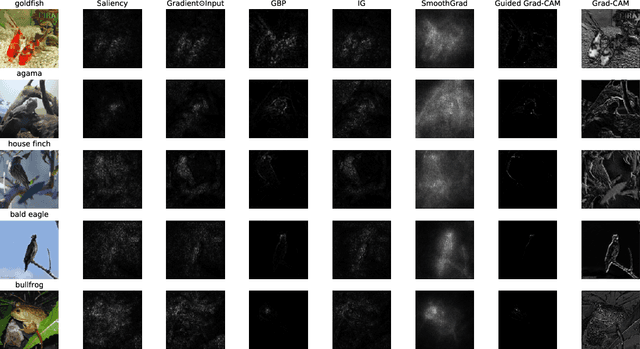
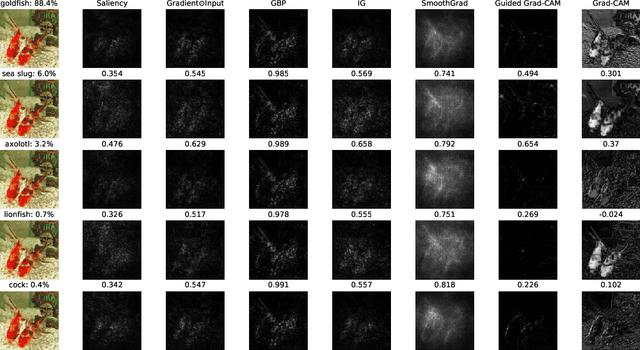

Abstract:With the rise of deep neural networks, the challenge of explaining the predictions of these networks has become increasingly recognized. While many methods for explaining the decisions of deep neural networks exist, there is currently no consensus on how to evaluate them. On the other hand, robustness is a popular topic for deep learning research; however, it is hardly talked about in explainability until very recently. In this tutorial paper, we start by presenting gradient-based interpretability methods. These techniques use gradient signals to assign the burden of the decision on the input features. Later, we discuss how gradient-based methods can be evaluated for their robustness and the role that adversarial robustness plays in having meaningful explanations. We also discuss the limitations of gradient-based methods. Finally, we present the best practices and attributes that should be examined before choosing an explainability method. We conclude with the future directions for research in the area at the convergence of robustness and explainability.
Two-Dimensional ARMA Modeling for Breast Cancer Detection and Classification
Jun 19, 2009
Abstract:We propose a new model-based computer-aided diagnosis (CAD) system for tumor detection and classification (cancerous v.s. benign) in breast images. Specifically, we show that (x-ray, ultrasound and MRI) images can be accurately modeled by two-dimensional autoregressive-moving average (ARMA) random fields. We derive a two-stage Yule-Walker Least-Squares estimates of the model parameters, which are subsequently used as the basis for statistical inference and biophysical interpretation of the breast image. We use a k-means classifier to segment the breast image into three regions: healthy tissue, benign tumor, and cancerous tumor. Our simulation results on ultrasound breast images illustrate the power of the proposed approach.
 Add to Chrome
Add to Chrome Add to Firefox
Add to Firefox Add to Edge
Add to Edge